Team
Copyright : Laboratoire LEMAR- 2018
Team
The marine biogeochemical cycles of the major and trace elements play fundamental roles in both the biological and chemical functioning of the ocean but also in terrestrial climatic regulation. Marine ecosystems (phytoplankton, zooplankton, bacteria, fish, predators) occupy a central place within these cycles and contribute by various processes (assimilation-degradation-trophic transfer-sedimentation) to transform, store and redistribute the chemical elements in the column. of ocean water. These transformations favor different levels of coupling between the element cycles and interact directly on the climate by modifying the gas exchanges involved in the radiative balance of the atmosphere (CO2, CH4, N2O, DMS). Despite significant progress made in recent decades, this essential role of marine ecosystems on biogeochemical cycles and ultimately on the climate remains poorly quantified and is still a scientific issue.
This issue is all the more important in the current context in which anthropogenic pressures on the ocean and marine organisms continue to increase and multiply. Climate change and modification of environmental forcings (T, pH, pCO2, currents, extension of sea ice), releases of polluting substances (toxic metals, pesticides, microplastics, etc.), intensive exploitation of biological resources or the degradation of natural habitats are all factors that can profoundly alter the structure, functioning and biodiversity of marine ecosystems. What will be the impacts of these modifications on biogeochemical cycles, ocean productivity, gas exchanges? What will be the climate feedbacks and organizations’ response to these changes? These are all questions that the scientific community must answer if it intends to reduce the uncertainties associated with climate simulations and anticipate the joint evolution of marine ecosystems.
It is around these questions that our research team (CHIBIDO) develops its activities. Our objects of study are the biogeochemical cycles of the major elements (C, N, P, S, Si) and metallic traces (Fe, Mn, Cu, Ni, Zn, Co, Cd, Mo, Pb) and we try, by multidisciplinary approaches involving physicists, biologists, chemists and modelers to contribute to the improvement of knowledge on the interactions between oceanic dynamics, biogeochemical cycles, ecosystems and climate. Our research actions combine a wide spectrum of approaches associating the development of new methods of analysis (multi-elementary, isotopic and speciation), the implementation of tracers / geochemical proxies (Baxs, 234Th, δ30Si, δ11B), in situ observation at different scales (microcosms, mesocosms, basin, global), laboratory experimentation and the use of numerical modeling. These approaches are part of the international (IMBER, GEOTRACES, SOLAS) and national (LEFE-CYBER, EC2CO / DRIL, LABEX Sea) programmatic framework and are structured along three lines of research:
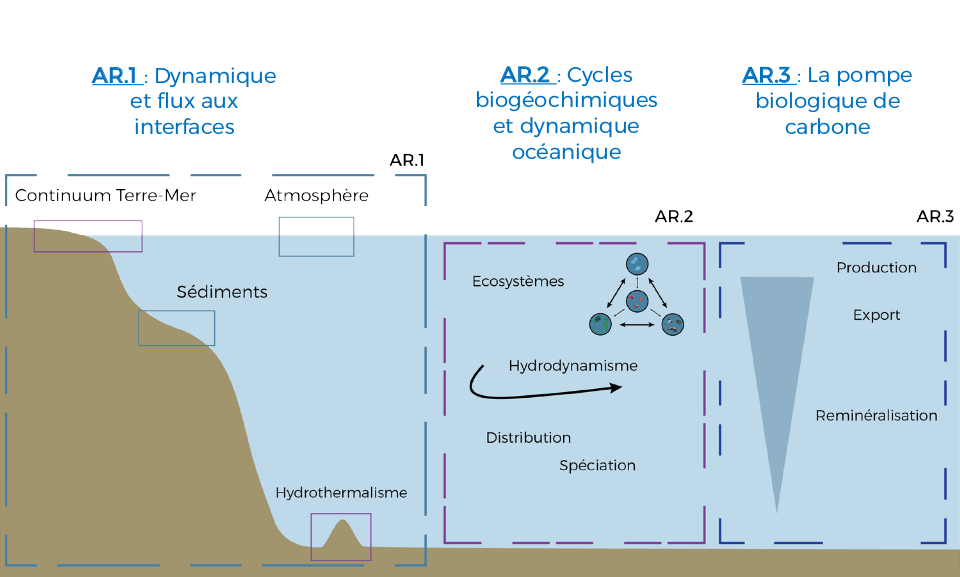
Axes de recherche de l’équipe Chibido.
Axis 1: Dynamics and flows at the interfaces
Animation: Olivier Ragueneau & Gabriel Dulaquais
A better understanding of oceanic biogeochemical cycles requires describing and understanding input and output, and their variability. To this end, we are working on the different interfaces with the ocean, since these interfaces are external sources and sinks of matter whose intensity and importance vary according to the element considered. These interfaces are generally the site of strong physico-chemical gradients and are extremely sensitive to different anthropogenic pressures.
Sediments, the ocean-atmosphere interface, and hydrothermal springs are the sources of metals for the ocean. Our findings showing that bacterial concentrations in rainwater samples are related to the increase in iron-specific ligand concentrations that can impact organic speciation of iron, our objective is to better understand the interactions between iron and bioaerosols and their fate in the ocean water column. In hydrothermal environments, our objective is to identify and describe the chemical reactions that determine the organic complexing of metals.
The land-sea continuum is an interface strongly impacted by anthropogenic pressures. The physico-chemical gradients in estuaries control river inputs of biogenic (Si, N) and metallic elements. Our team continues to improve our understanding of the dynamics of these elements along the land-sea continuum by studying the changes that occur through adsorption/desorption, coagulation, complexing or degradation processes and by characterizing the composition and physico-chemical role of organic matter that influences their bioavailability/toxicity.
In addition, our work in the Bay of Vilaine should lead us to participate in the development of a nutrient limitation scheme that could restore eutrophic ecosystems. By improving our knowledge of the Brest Rade we wish to use climate change scenarios to model the evolution of nutrient fluxes in the coastal zone. These scenarios can be combined with scenarios of changes in agricultural practices in the watersheds in collaboration with AMURE’s team of economists.
Axis 2: biogeochemical cycles and ocean dynamics
Animation: Pascal Rivière & Eva Bucciarelli
In this RA, we are seeking to better understand the spatial and temporal variability of phytoplankton production in relation to cycle dynamics and small-scale hydrodynamic structures. To do this, we have targeted several objectives
(1) to observe and describe the distributions and chemical speciation of dissolved and particulate trace metals during major international oceanographic cruises
(2) to study factors such as limitations or toxicity and pressures that will control the internal dynamics of biogenic elements (N, Si, metals) in relation to phytoplankton physiology and phytoplankton community structure in collaboration with Team 2
(3) to link small-scale dynamic structures and planktonic biodiversity.
To achieve these objectives, we combine different approaches involving in situ observation within the framework of international (GEOTRACES) and national programs (biologging and sea elephants CNES-TOSCA ) or from the LAbexMer and EUR ISblue (M2BIPAT), laboratory and natural environment process studies (isotopic techniques), as well as 3D ocean circulation models (NEMO, CROCO) coupled with biogeochemical models (PISCES, DARWIN, DARWIN-QUOTA) to understand planktonic diversity.
Axis 3: the biological carbon pump
Animation : Laurent Mémery
In close connection with ISBLUE Theme 1, the objectives of this axis are to study the factors controlling the nature, amplitude, and mitigation of carbon export fluxes from the surface to the deep ocean. Emphasis is placed on the processes of particle formation (biological and physical aggregation), vertical export (proxy 234Th), mesopelagic remineralization (proxy Baxs) and trophic interactions with microbial and zooplankton communities. Despite the progress made by recent models that increasingly take into account the processes controlling export, such as size classes and zooplankton behaviour, there is still a need to improve our understanding of particle dynamics and the factors affecting particle size and number, their sink rate and their fate in the mesopalagic zone. To this end, our approach includes in situ measurement campaigns using geochemical proxies, as well as process studies more specifically related to processes impacting particle dynamics in mesopelagic zones and various modelling tools.
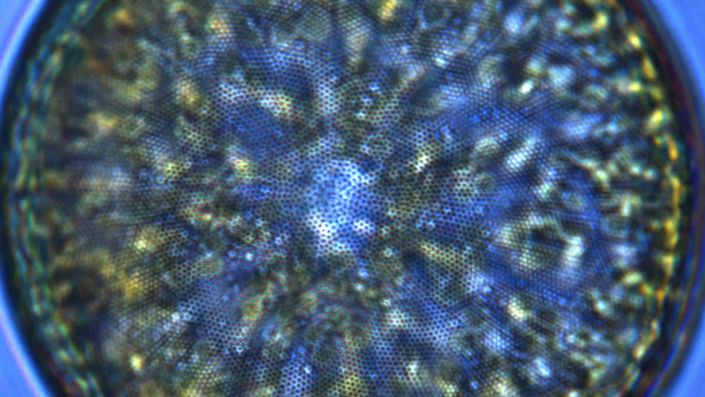
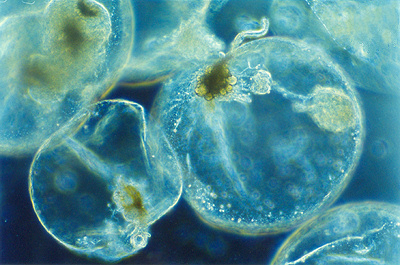
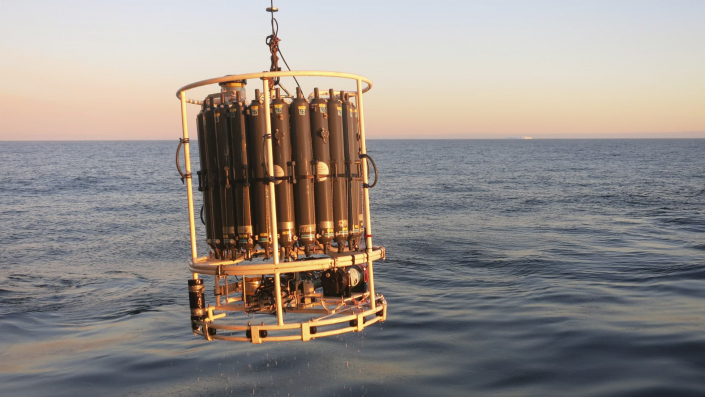
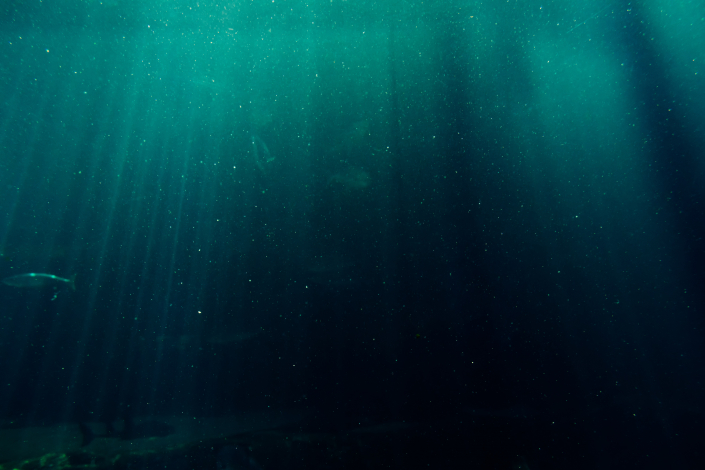
 https://www-iuem.univ-brest.fr/lemar/wp-content/uploads/2018/10/22.jpg
398
415
sherve@univ-brest.fr
https://www-iuem.univ-brest.fr/lemar/wp-content/uploads/2018/10/logo-lemar-big.png
sherve@univ-brest.fr2018-10-04 14:22:262025-03-11 14:21:56Matthieu WAELES
https://www-iuem.univ-brest.fr/lemar/wp-content/uploads/2018/10/22.jpg
398
415
sherve@univ-brest.fr
https://www-iuem.univ-brest.fr/lemar/wp-content/uploads/2018/10/logo-lemar-big.png
sherve@univ-brest.fr2018-10-04 14:22:262025-03-11 14:21:56Matthieu WAELES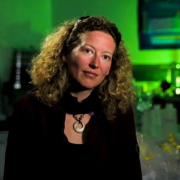 https://www-iuem.univ-brest.fr/lemar/wp-content/uploads/2018/05/10407447_1052150504814309_169131165620242263_n.jpg
444
424
sherve@univ-brest.fr
https://www-iuem.univ-brest.fr/lemar/wp-content/uploads/2018/10/logo-lemar-big.png
sherve@univ-brest.fr2022-04-06 16:51:132022-04-06 16:53:55Brivaëla MORICEAU
https://www-iuem.univ-brest.fr/lemar/wp-content/uploads/2018/05/10407447_1052150504814309_169131165620242263_n.jpg
444
424
sherve@univ-brest.fr
https://www-iuem.univ-brest.fr/lemar/wp-content/uploads/2018/10/logo-lemar-big.png
sherve@univ-brest.fr2022-04-06 16:51:132022-04-06 16:53:55Brivaëla MORICEAU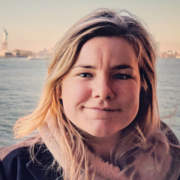 https://www-iuem.univ-brest.fr/lemar/wp-content/uploads/2024/01/Acker_Marianne.jpg
1080
1920
Emilie Le Roy
https://www-iuem.univ-brest.fr/lemar/wp-content/uploads/2018/10/logo-lemar-big.png
Emilie Le Roy2024-01-29 10:53:422024-01-29 11:03:40Marianne ACKER
https://www-iuem.univ-brest.fr/lemar/wp-content/uploads/2024/01/Acker_Marianne.jpg
1080
1920
Emilie Le Roy
https://www-iuem.univ-brest.fr/lemar/wp-content/uploads/2018/10/logo-lemar-big.png
Emilie Le Roy2024-01-29 10:53:422024-01-29 11:03:40Marianne ACKER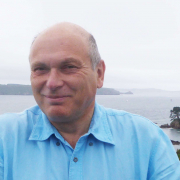 https://www-iuem.univ-brest.fr/lemar/wp-content/uploads/2021/07/JAB21_2-scaled.jpg
1366
2560
Adeline Bidault
https://www-iuem.univ-brest.fr/lemar/wp-content/uploads/2018/10/logo-lemar-big.png
Adeline Bidault2020-12-16 11:39:162022-03-30 14:59:04Jean-Alix BARRAT
https://www-iuem.univ-brest.fr/lemar/wp-content/uploads/2021/07/JAB21_2-scaled.jpg
1366
2560
Adeline Bidault
https://www-iuem.univ-brest.fr/lemar/wp-content/uploads/2018/10/logo-lemar-big.png
Adeline Bidault2020-12-16 11:39:162022-03-30 14:59:04Jean-Alix BARRAT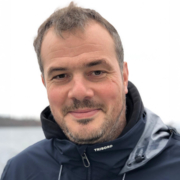 https://www-iuem.univ-brest.fr/lemar/wp-content/uploads/2024/09/Boulart_Cedric-Main.jpg
1080
1920
Sebastien Herve
https://www-iuem.univ-brest.fr/lemar/wp-content/uploads/2018/10/logo-lemar-big.png
Sebastien Herve2024-09-26 15:56:132024-11-06 08:48:57Cédric BOULART
https://www-iuem.univ-brest.fr/lemar/wp-content/uploads/2024/09/Boulart_Cedric-Main.jpg
1080
1920
Sebastien Herve
https://www-iuem.univ-brest.fr/lemar/wp-content/uploads/2018/10/logo-lemar-big.png
Sebastien Herve2024-09-26 15:56:132024-11-06 08:48:57Cédric BOULART https://www-iuem.univ-brest.fr/lemar/wp-content/uploads/2018/05/10407447_1052150504814309_169131165620242263_n.jpg
444
424
sherve@univ-brest.fr
https://www-iuem.univ-brest.fr/lemar/wp-content/uploads/2018/10/logo-lemar-big.png
sherve@univ-brest.fr2022-04-06 16:51:132022-04-06 16:53:55Brivaëla MORICEAU
https://www-iuem.univ-brest.fr/lemar/wp-content/uploads/2018/05/10407447_1052150504814309_169131165620242263_n.jpg
444
424
sherve@univ-brest.fr
https://www-iuem.univ-brest.fr/lemar/wp-content/uploads/2018/10/logo-lemar-big.png
sherve@univ-brest.fr2022-04-06 16:51:132022-04-06 16:53:55Brivaëla MORICEAU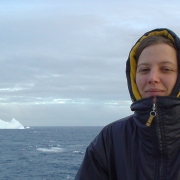 https://www-iuem.univ-brest.fr/lemar/wp-content/uploads/2018/10/eva-profil.jpg
921
1629
sherve@univ-brest.fr
https://www-iuem.univ-brest.fr/lemar/wp-content/uploads/2018/10/logo-lemar-big.png
sherve@univ-brest.fr2018-10-04 14:46:572018-10-25 09:10:50Eva BUCCIARELLI
https://www-iuem.univ-brest.fr/lemar/wp-content/uploads/2018/10/eva-profil.jpg
921
1629
sherve@univ-brest.fr
https://www-iuem.univ-brest.fr/lemar/wp-content/uploads/2018/10/logo-lemar-big.png
sherve@univ-brest.fr2018-10-04 14:46:572018-10-25 09:10:50Eva BUCCIARELLI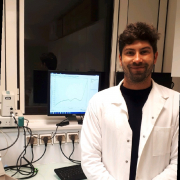 https://www-iuem.univ-brest.fr/lemar/wp-content/uploads/2021/12/1608747912970.jpg
800
800
sherve@univ-brest.fr
https://www-iuem.univ-brest.fr/lemar/wp-content/uploads/2018/10/logo-lemar-big.png
sherve@univ-brest.fr2018-10-29 10:36:142021-01-04 17:14:08Gabriel DULAQUAIS
https://www-iuem.univ-brest.fr/lemar/wp-content/uploads/2021/12/1608747912970.jpg
800
800
sherve@univ-brest.fr
https://www-iuem.univ-brest.fr/lemar/wp-content/uploads/2018/10/logo-lemar-big.png
sherve@univ-brest.fr2018-10-29 10:36:142021-01-04 17:14:08Gabriel DULAQUAIS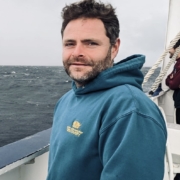 https://www-iuem.univ-brest.fr/lemar/wp-content/uploads/2024/02/OMVLE0120-Copie.jpg
1134
1006
sherve@univ-brest.fr
https://www-iuem.univ-brest.fr/lemar/wp-content/uploads/2018/10/logo-lemar-big.png
sherve@univ-brest.fr2022-04-26 13:57:042022-04-26 14:23:05Frédéric LE MOIGNE
https://www-iuem.univ-brest.fr/lemar/wp-content/uploads/2024/02/OMVLE0120-Copie.jpg
1134
1006
sherve@univ-brest.fr
https://www-iuem.univ-brest.fr/lemar/wp-content/uploads/2018/10/logo-lemar-big.png
sherve@univ-brest.fr2022-04-26 13:57:042022-04-26 14:23:05Frédéric LE MOIGNE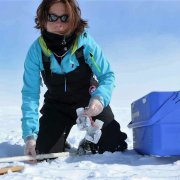 https://www-iuem.univ-brest.fr/lemar/wp-content/uploads/2018/10/aude-terrain-greenedge.jpg
848
1271
sherve@univ-brest.fr
https://www-iuem.univ-brest.fr/lemar/wp-content/uploads/2018/10/logo-lemar-big.png
sherve@univ-brest.fr2018-10-04 14:47:442021-01-04 16:41:06Aude LEYNAERT
https://www-iuem.univ-brest.fr/lemar/wp-content/uploads/2018/10/aude-terrain-greenedge.jpg
848
1271
sherve@univ-brest.fr
https://www-iuem.univ-brest.fr/lemar/wp-content/uploads/2018/10/logo-lemar-big.png
sherve@univ-brest.fr2018-10-04 14:47:442021-01-04 16:41:06Aude LEYNAERT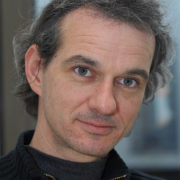 https://www-iuem.univ-brest.fr/lemar/wp-content/uploads/2018/10/JF-MAGUER-PHOTO-1-e1615386288165.jpg
572
425
sherve@univ-brest.fr
https://www-iuem.univ-brest.fr/lemar/wp-content/uploads/2018/10/logo-lemar-big.png
sherve@univ-brest.fr2018-10-04 14:21:562023-03-08 17:17:51Jean-François MAGUER
https://www-iuem.univ-brest.fr/lemar/wp-content/uploads/2018/10/JF-MAGUER-PHOTO-1-e1615386288165.jpg
572
425
sherve@univ-brest.fr
https://www-iuem.univ-brest.fr/lemar/wp-content/uploads/2018/10/logo-lemar-big.png
sherve@univ-brest.fr2018-10-04 14:21:562023-03-08 17:17:51Jean-François MAGUER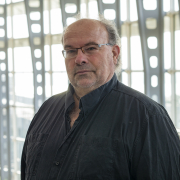 https://www-iuem.univ-brest.fr/lemar/wp-content/uploads/2018/10/memery-laurent_4.jpg
3448
4592
sherve@univ-brest.fr
https://www-iuem.univ-brest.fr/lemar/wp-content/uploads/2018/10/logo-lemar-big.png
sherve@univ-brest.fr2018-10-29 10:36:202021-01-04 17:05:41Laurent MEMERY
https://www-iuem.univ-brest.fr/lemar/wp-content/uploads/2018/10/memery-laurent_4.jpg
3448
4592
sherve@univ-brest.fr
https://www-iuem.univ-brest.fr/lemar/wp-content/uploads/2018/10/logo-lemar-big.png
sherve@univ-brest.fr2018-10-29 10:36:202021-01-04 17:05:41Laurent MEMERY https://www-iuem.univ-brest.fr/lemar/wp-content/uploads/2018/04/generic-lemar-man.png
1080
1920
sherve@univ-brest.fr
https://www-iuem.univ-brest.fr/lemar/wp-content/uploads/2018/10/logo-lemar-big.png
sherve@univ-brest.fr2018-10-29 10:36:242021-01-04 13:51:50Frédéric PLANCHON
https://www-iuem.univ-brest.fr/lemar/wp-content/uploads/2018/04/generic-lemar-man.png
1080
1920
sherve@univ-brest.fr
https://www-iuem.univ-brest.fr/lemar/wp-content/uploads/2018/10/logo-lemar-big.png
sherve@univ-brest.fr2018-10-29 10:36:242021-01-04 13:51:50Frédéric PLANCHON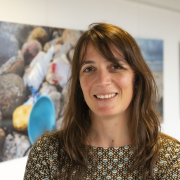 https://www-iuem.univ-brest.fr/lemar/wp-content/uploads/2018/05/Planquette_Helene-3-scaled.jpg
1922
2560
sherve@univ-brest.fr
https://www-iuem.univ-brest.fr/lemar/wp-content/uploads/2018/10/logo-lemar-big.png
sherve@univ-brest.fr2018-05-28 14:23:182021-01-04 13:43:17Hélène PLANQUETTE
https://www-iuem.univ-brest.fr/lemar/wp-content/uploads/2018/05/Planquette_Helene-3-scaled.jpg
1922
2560
sherve@univ-brest.fr
https://www-iuem.univ-brest.fr/lemar/wp-content/uploads/2018/10/logo-lemar-big.png
sherve@univ-brest.fr2018-05-28 14:23:182021-01-04 13:43:17Hélène PLANQUETTE
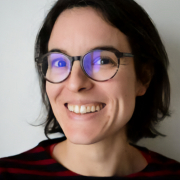 https://www-iuem.univ-brest.fr/lemar/wp-content/uploads/2021/02/raimonet-melanie-1.jpg
1080
1920
sherve@univ-brest.fr
https://www-iuem.univ-brest.fr/lemar/wp-content/uploads/2018/10/logo-lemar-big.png
sherve@univ-brest.fr2021-02-16 10:15:172021-09-03 09:24:15Mélanie RAIMONET
https://www-iuem.univ-brest.fr/lemar/wp-content/uploads/2021/02/raimonet-melanie-1.jpg
1080
1920
sherve@univ-brest.fr
https://www-iuem.univ-brest.fr/lemar/wp-content/uploads/2018/10/logo-lemar-big.png
sherve@univ-brest.fr2021-02-16 10:15:172021-09-03 09:24:15Mélanie RAIMONET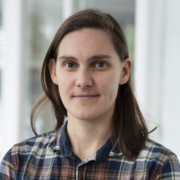 https://www-iuem.univ-brest.fr/lemar/wp-content/uploads/2024/09/Richon_Camille-main.jpg
1080
1920
Sebastien Herve
https://www-iuem.univ-brest.fr/lemar/wp-content/uploads/2018/10/logo-lemar-big.png
Sebastien Herve2024-09-26 15:50:442024-10-17 12:28:09Camille RICHON
https://www-iuem.univ-brest.fr/lemar/wp-content/uploads/2024/09/Richon_Camille-main.jpg
1080
1920
Sebastien Herve
https://www-iuem.univ-brest.fr/lemar/wp-content/uploads/2018/10/logo-lemar-big.png
Sebastien Herve2024-09-26 15:50:442024-10-17 12:28:09Camille RICHON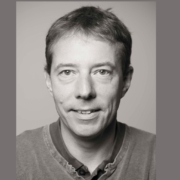 https://www-iuem.univ-brest.fr/lemar/wp-content/uploads/2024/06/Photo169.jpg
511
907
sherve@univ-brest.fr
https://www-iuem.univ-brest.fr/lemar/wp-content/uploads/2018/10/logo-lemar-big.png
sherve@univ-brest.fr2018-10-29 10:36:252021-01-04 17:15:17Pascal RIVIERE
https://www-iuem.univ-brest.fr/lemar/wp-content/uploads/2024/06/Photo169.jpg
511
907
sherve@univ-brest.fr
https://www-iuem.univ-brest.fr/lemar/wp-content/uploads/2018/10/logo-lemar-big.png
sherve@univ-brest.fr2018-10-29 10:36:252021-01-04 17:15:17Pascal RIVIERE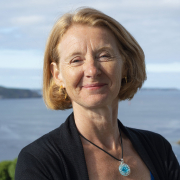 https://www-iuem.univ-brest.fr/lemar/wp-content/uploads/2018/06/Sarthou-Geraldine-main.jpg
1080
1920
sherve@univ-brest.fr
https://www-iuem.univ-brest.fr/lemar/wp-content/uploads/2018/10/logo-lemar-big.png
sherve@univ-brest.fr2018-06-18 17:27:002022-07-06 09:13:04Géraldine SARTHOU
https://www-iuem.univ-brest.fr/lemar/wp-content/uploads/2018/06/Sarthou-Geraldine-main.jpg
1080
1920
sherve@univ-brest.fr
https://www-iuem.univ-brest.fr/lemar/wp-content/uploads/2018/10/logo-lemar-big.png
sherve@univ-brest.fr2018-06-18 17:27:002022-07-06 09:13:04Géraldine SARTHOU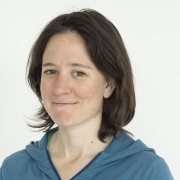 https://www-iuem.univ-brest.fr/lemar/wp-content/uploads/2018/06/Sutton-Jill-.jpg
1080
1920
sherve@univ-brest.fr
https://www-iuem.univ-brest.fr/lemar/wp-content/uploads/2018/10/logo-lemar-big.png
sherve@univ-brest.fr2018-06-18 17:27:112022-03-04 11:01:51Jill SUTTON
https://www-iuem.univ-brest.fr/lemar/wp-content/uploads/2018/06/Sutton-Jill-.jpg
1080
1920
sherve@univ-brest.fr
https://www-iuem.univ-brest.fr/lemar/wp-content/uploads/2018/10/logo-lemar-big.png
sherve@univ-brest.fr2018-06-18 17:27:112022-03-04 11:01:51Jill SUTTON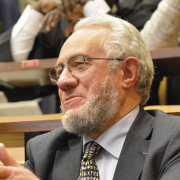 https://www-iuem.univ-brest.fr/lemar/wp-content/uploads/2018/06/Treguer-Paul.jpg
1080
1920
sherve@univ-brest.fr
https://www-iuem.univ-brest.fr/lemar/wp-content/uploads/2018/10/logo-lemar-big.png
sherve@univ-brest.fr2018-06-18 17:27:212022-04-07 09:11:14Paul TREGUER
https://www-iuem.univ-brest.fr/lemar/wp-content/uploads/2018/06/Treguer-Paul.jpg
1080
1920
sherve@univ-brest.fr
https://www-iuem.univ-brest.fr/lemar/wp-content/uploads/2018/10/logo-lemar-big.png
sherve@univ-brest.fr2018-06-18 17:27:212022-04-07 09:11:14Paul TREGUER https://www-iuem.univ-brest.fr/lemar/wp-content/uploads/2020/12/Baudet_Corentin.jpg
1080
1920
Adeline Bidault
https://www-iuem.univ-brest.fr/lemar/wp-content/uploads/2018/10/logo-lemar-big.png
Adeline Bidault2020-12-16 11:38:522025-02-04 10:51:34Corentin BAUDET
https://www-iuem.univ-brest.fr/lemar/wp-content/uploads/2020/12/Baudet_Corentin.jpg
1080
1920
Adeline Bidault
https://www-iuem.univ-brest.fr/lemar/wp-content/uploads/2018/10/logo-lemar-big.png
Adeline Bidault2020-12-16 11:38:522025-02-04 10:51:34Corentin BAUDET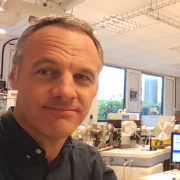
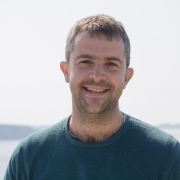 https://www-iuem.univ-brest.fr/lemar/wp-content/uploads/2019/03/Delebecq_Gaspard.jpg
1080
1920
sherve@univ-brest.fr
https://www-iuem.univ-brest.fr/lemar/wp-content/uploads/2018/10/logo-lemar-big.png
sherve@univ-brest.fr2019-03-08 16:06:562021-01-04 17:16:22Gaspard DELEBECQ
https://www-iuem.univ-brest.fr/lemar/wp-content/uploads/2019/03/Delebecq_Gaspard.jpg
1080
1920
sherve@univ-brest.fr
https://www-iuem.univ-brest.fr/lemar/wp-content/uploads/2018/10/logo-lemar-big.png
sherve@univ-brest.fr2019-03-08 16:06:562021-01-04 17:16:22Gaspard DELEBECQ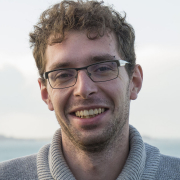
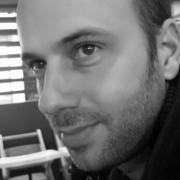
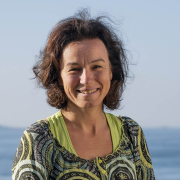 https://www-iuem.univ-brest.fr/lemar/wp-content/uploads/2018/06/Gallinari-Morgane.jpg
1080
1920
sherve@univ-brest.fr
https://www-iuem.univ-brest.fr/lemar/wp-content/uploads/2018/10/logo-lemar-big.png
sherve@univ-brest.fr2018-06-29 15:07:052024-01-29 17:40:28Morgane GALLINARI
https://www-iuem.univ-brest.fr/lemar/wp-content/uploads/2018/06/Gallinari-Morgane.jpg
1080
1920
sherve@univ-brest.fr
https://www-iuem.univ-brest.fr/lemar/wp-content/uploads/2018/10/logo-lemar-big.png
sherve@univ-brest.fr2018-06-29 15:07:052024-01-29 17:40:28Morgane GALLINARI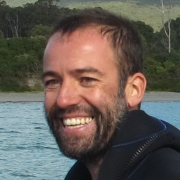 https://www-iuem.univ-brest.fr/lemar/wp-content/uploads/2020/11/Emmanuel_Laurenceau-Cornec.jpg
512
512
sherve@univ-brest.fr
https://www-iuem.univ-brest.fr/lemar/wp-content/uploads/2018/10/logo-lemar-big.png
sherve@univ-brest.fr2020-05-04 13:04:292022-10-05 08:22:57Emmanuel LAURENCEAU
https://www-iuem.univ-brest.fr/lemar/wp-content/uploads/2020/11/Emmanuel_Laurenceau-Cornec.jpg
512
512
sherve@univ-brest.fr
https://www-iuem.univ-brest.fr/lemar/wp-content/uploads/2018/10/logo-lemar-big.png
sherve@univ-brest.fr2020-05-04 13:04:292022-10-05 08:22:57Emmanuel LAURENCEAU
 https://www-iuem.univ-brest.fr/lemar/wp-content/uploads/2018/04/generic-lemar-woman.png
1080
1920
Sebastien Herve
https://www-iuem.univ-brest.fr/lemar/wp-content/uploads/2018/10/logo-lemar-big.png
Sebastien Herve2025-02-05 17:11:452025-02-05 17:11:45Charlotte RENOUL
https://www-iuem.univ-brest.fr/lemar/wp-content/uploads/2018/04/generic-lemar-woman.png
1080
1920
Sebastien Herve
https://www-iuem.univ-brest.fr/lemar/wp-content/uploads/2018/10/logo-lemar-big.png
Sebastien Herve2025-02-05 17:11:452025-02-05 17:11:45Charlotte RENOUL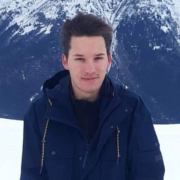 https://www-iuem.univ-brest.fr/lemar/wp-content/uploads/2023/12/Barge_Florian.jpg
1080
1920
Sebastien Herve
https://www-iuem.univ-brest.fr/lemar/wp-content/uploads/2018/10/logo-lemar-big.png
Sebastien Herve2023-12-06 16:10:522024-11-21 17:00:10Florian BARGE
https://www-iuem.univ-brest.fr/lemar/wp-content/uploads/2023/12/Barge_Florian.jpg
1080
1920
Sebastien Herve
https://www-iuem.univ-brest.fr/lemar/wp-content/uploads/2018/10/logo-lemar-big.png
Sebastien Herve2023-12-06 16:10:522024-11-21 17:00:10Florian BARGE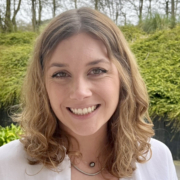 https://www-iuem.univ-brest.fr/lemar/wp-content/uploads/2023/12/Bassez_Marie.jpg
1080
1920
Sebastien Herve
https://www-iuem.univ-brest.fr/lemar/wp-content/uploads/2018/10/logo-lemar-big.png
Sebastien Herve2023-12-06 15:49:282023-12-06 15:50:01Marie BASSEZ
https://www-iuem.univ-brest.fr/lemar/wp-content/uploads/2023/12/Bassez_Marie.jpg
1080
1920
Sebastien Herve
https://www-iuem.univ-brest.fr/lemar/wp-content/uploads/2018/10/logo-lemar-big.png
Sebastien Herve2023-12-06 15:49:282023-12-06 15:50:01Marie BASSEZ https://www-iuem.univ-brest.fr/lemar/wp-content/uploads/2022/10/Benito_Lea-Main.jpg
1080
1920
sherve@univ-brest.fr
https://www-iuem.univ-brest.fr/lemar/wp-content/uploads/2018/10/logo-lemar-big.png
sherve@univ-brest.fr2022-10-12 15:11:112022-10-21 11:53:05Léa BENITO
https://www-iuem.univ-brest.fr/lemar/wp-content/uploads/2022/10/Benito_Lea-Main.jpg
1080
1920
sherve@univ-brest.fr
https://www-iuem.univ-brest.fr/lemar/wp-content/uploads/2018/10/logo-lemar-big.png
sherve@univ-brest.fr2022-10-12 15:11:112022-10-21 11:53:05Léa BENITO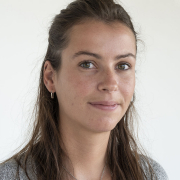 https://www-iuem.univ-brest.fr/lemar/wp-content/uploads/2020/12/Blais-Clemence.jpg
1080
1920
sherve@univ-brest.fr
https://www-iuem.univ-brest.fr/lemar/wp-content/uploads/2018/10/logo-lemar-big.png
sherve@univ-brest.fr2020-12-16 12:02:532021-10-26 10:33:19Clémence BLAIS
https://www-iuem.univ-brest.fr/lemar/wp-content/uploads/2020/12/Blais-Clemence.jpg
1080
1920
sherve@univ-brest.fr
https://www-iuem.univ-brest.fr/lemar/wp-content/uploads/2018/10/logo-lemar-big.png
sherve@univ-brest.fr2020-12-16 12:02:532021-10-26 10:33:19Clémence BLAIS https://www-iuem.univ-brest.fr/lemar/wp-content/uploads/2018/04/generic-lemar-woman.png
1080
1920
Sebastien Herve
https://www-iuem.univ-brest.fr/lemar/wp-content/uploads/2018/10/logo-lemar-big.png
Sebastien Herve2025-01-15 13:09:212025-01-15 13:14:20Hana CHELLY
https://www-iuem.univ-brest.fr/lemar/wp-content/uploads/2018/04/generic-lemar-woman.png
1080
1920
Sebastien Herve
https://www-iuem.univ-brest.fr/lemar/wp-content/uploads/2018/10/logo-lemar-big.png
Sebastien Herve2025-01-15 13:09:212025-01-15 13:14:20Hana CHELLY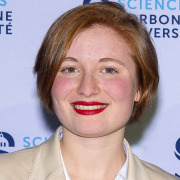 https://www-iuem.univ-brest.fr/lemar/wp-content/uploads/2023/03/Cretin_Pauline.jpg
1080
1920
sherve@univ-brest.fr
https://www-iuem.univ-brest.fr/lemar/wp-content/uploads/2018/10/logo-lemar-big.png
sherve@univ-brest.fr2023-03-08 17:10:292023-03-08 17:19:23Pauline CRETIN
https://www-iuem.univ-brest.fr/lemar/wp-content/uploads/2023/03/Cretin_Pauline.jpg
1080
1920
sherve@univ-brest.fr
https://www-iuem.univ-brest.fr/lemar/wp-content/uploads/2018/10/logo-lemar-big.png
sherve@univ-brest.fr2023-03-08 17:10:292023-03-08 17:19:23Pauline CRETIN https://www-iuem.univ-brest.fr/lemar/wp-content/uploads/2018/04/generic-lemar-woman.png
1080
1920
Sebastien Herve
https://www-iuem.univ-brest.fr/lemar/wp-content/uploads/2018/10/logo-lemar-big.png
Sebastien Herve2024-11-19 11:17:422024-11-19 11:35:52Anne GAYMARD
https://www-iuem.univ-brest.fr/lemar/wp-content/uploads/2018/04/generic-lemar-woman.png
1080
1920
Sebastien Herve
https://www-iuem.univ-brest.fr/lemar/wp-content/uploads/2018/10/logo-lemar-big.png
Sebastien Herve2024-11-19 11:17:422024-11-19 11:35:52Anne GAYMARD https://www-iuem.univ-brest.fr/lemar/wp-content/uploads/2022/10/Littaye_Jean-main.jpg
1080
1920
sherve@univ-brest.fr
https://www-iuem.univ-brest.fr/lemar/wp-content/uploads/2018/10/logo-lemar-big.png
sherve@univ-brest.fr2022-10-20 09:42:492023-01-12 14:47:37Jean LITTAYE
https://www-iuem.univ-brest.fr/lemar/wp-content/uploads/2022/10/Littaye_Jean-main.jpg
1080
1920
sherve@univ-brest.fr
https://www-iuem.univ-brest.fr/lemar/wp-content/uploads/2018/10/logo-lemar-big.png
sherve@univ-brest.fr2022-10-20 09:42:492023-01-12 14:47:37Jean LITTAYE https://www-iuem.univ-brest.fr/lemar/wp-content/uploads/2018/04/generic-lemar-man.png
1080
1920
Sebastien Herve
https://www-iuem.univ-brest.fr/lemar/wp-content/uploads/2018/10/logo-lemar-big.png
Sebastien Herve2024-11-19 11:10:442024-11-19 11:10:44Loïc MADEC
https://www-iuem.univ-brest.fr/lemar/wp-content/uploads/2018/04/generic-lemar-man.png
1080
1920
Sebastien Herve
https://www-iuem.univ-brest.fr/lemar/wp-content/uploads/2018/10/logo-lemar-big.png
Sebastien Herve2024-11-19 11:10:442024-11-19 11:10:44Loïc MADEC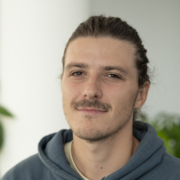 https://www-iuem.univ-brest.fr/lemar/wp-content/uploads/2023/12/Ringard-Antoine.jpg
1080
1920
Sebastien Herve
https://www-iuem.univ-brest.fr/lemar/wp-content/uploads/2018/10/logo-lemar-big.png
Sebastien Herve2023-12-11 11:20:562023-12-11 11:24:25Antoine RINGARD
https://www-iuem.univ-brest.fr/lemar/wp-content/uploads/2023/12/Ringard-Antoine.jpg
1080
1920
Sebastien Herve
https://www-iuem.univ-brest.fr/lemar/wp-content/uploads/2018/10/logo-lemar-big.png
Sebastien Herve2023-12-11 11:20:562023-12-11 11:24:25Antoine RINGARD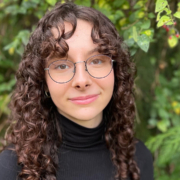 https://www-iuem.univ-brest.fr/lemar/wp-content/uploads/2024/11/Roussel_Emma-main.jpg
1080
1920
Sebastien Herve
https://www-iuem.univ-brest.fr/lemar/wp-content/uploads/2018/10/logo-lemar-big.png
Sebastien Herve2024-11-19 10:24:032024-11-19 10:29:35Emma ROUSSEL
https://www-iuem.univ-brest.fr/lemar/wp-content/uploads/2024/11/Roussel_Emma-main.jpg
1080
1920
Sebastien Herve
https://www-iuem.univ-brest.fr/lemar/wp-content/uploads/2018/10/logo-lemar-big.png
Sebastien Herve2024-11-19 10:24:032024-11-19 10:29:35Emma ROUSSEL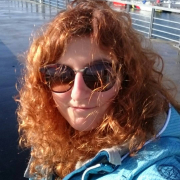 https://www-iuem.univ-brest.fr/lemar/wp-content/uploads/2021/11/12182793_10206873862597967_6573513544720181933_o.jpg
1080
1080
sherve@univ-brest.fr
https://www-iuem.univ-brest.fr/lemar/wp-content/uploads/2018/10/logo-lemar-big.png
sherve@univ-brest.fr2019-10-02 09:34:472022-06-29 17:26:10Laura SCHWEIBOLD
https://www-iuem.univ-brest.fr/lemar/wp-content/uploads/2021/11/12182793_10206873862597967_6573513544720181933_o.jpg
1080
1080
sherve@univ-brest.fr
https://www-iuem.univ-brest.fr/lemar/wp-content/uploads/2018/10/logo-lemar-big.png
sherve@univ-brest.fr2019-10-02 09:34:472022-06-29 17:26:10Laura SCHWEIBOLD https://www-iuem.univ-brest.fr/lemar/wp-content/uploads/2025/02/Portrait_A.Lewden-scaled.jpg
1700
2560
sherve@univ-brest.fr
https://www-iuem.univ-brest.fr/lemar/wp-content/uploads/2018/10/logo-lemar-big.png
sherve@univ-brest.fr2022-07-08 10:43:512024-09-26 15:37:10Agnès LEWDEN
https://www-iuem.univ-brest.fr/lemar/wp-content/uploads/2025/02/Portrait_A.Lewden-scaled.jpg
1700
2560
sherve@univ-brest.fr
https://www-iuem.univ-brest.fr/lemar/wp-content/uploads/2018/10/logo-lemar-big.png
sherve@univ-brest.fr2022-07-08 10:43:512024-09-26 15:37:10Agnès LEWDEN https://www-iuem.univ-brest.fr/lemar/wp-content/uploads/2018/04/generic-lemar-man.png
1080
1920
sherve@univ-brest.fr
https://www-iuem.univ-brest.fr/lemar/wp-content/uploads/2018/10/logo-lemar-big.png
sherve@univ-brest.fr2023-03-22 12:11:272023-03-22 12:11:27Matthieu CIVEL-MAZENS
https://www-iuem.univ-brest.fr/lemar/wp-content/uploads/2018/04/generic-lemar-man.png
1080
1920
sherve@univ-brest.fr
https://www-iuem.univ-brest.fr/lemar/wp-content/uploads/2018/10/logo-lemar-big.png
sherve@univ-brest.fr2023-03-22 12:11:272023-03-22 12:11:27Matthieu CIVEL-MAZENS https://www-iuem.univ-brest.fr/lemar/wp-content/uploads/2022/09/Perron_Morgane_main.png
1080
1920
sherve@univ-brest.fr
https://www-iuem.univ-brest.fr/lemar/wp-content/uploads/2018/10/logo-lemar-big.png
sherve@univ-brest.fr2022-09-22 12:32:582022-09-22 12:33:43Morgane PERRON
https://www-iuem.univ-brest.fr/lemar/wp-content/uploads/2022/09/Perron_Morgane_main.png
1080
1920
sherve@univ-brest.fr
https://www-iuem.univ-brest.fr/lemar/wp-content/uploads/2018/10/logo-lemar-big.png
sherve@univ-brest.fr2022-09-22 12:32:582022-09-22 12:33:43Morgane PERRON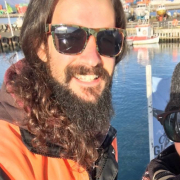 https://www-iuem.univ-brest.fr/lemar/wp-content/uploads/2018/12/23621201_10214392302109828_4477757869956495140_n.jpg
659
659
sherve@univ-brest.fr
https://www-iuem.univ-brest.fr/lemar/wp-content/uploads/2018/10/logo-lemar-big.png
sherve@univ-brest.fr2018-10-29 10:36:272024-11-19 10:36:44Jordan TOULLEC
https://www-iuem.univ-brest.fr/lemar/wp-content/uploads/2018/12/23621201_10214392302109828_4477757869956495140_n.jpg
659
659
sherve@univ-brest.fr
https://www-iuem.univ-brest.fr/lemar/wp-content/uploads/2018/10/logo-lemar-big.png
sherve@univ-brest.fr2018-10-29 10:36:272024-11-19 10:36:44Jordan TOULLECCopyright : Laboratoire LEMAR- 2018
